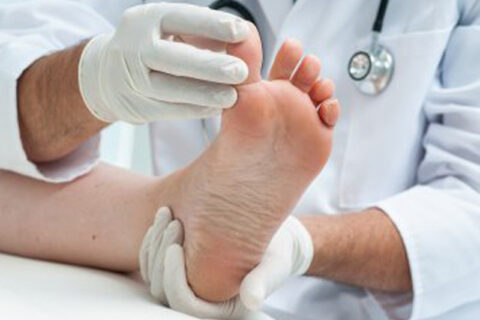What Is Tarsal Tunnel Syndrome?

You might be familiar with the carpal tunnel, which is the narrow passageway located at the wrist. The tarsal tunnel is a similar, narrow space, but it’s located on the inside of the ankle. This structure houses blood vessels, tendons, and nerves, including the posterior tibial nerve. Just like carpal tunnel syndrome, tarsal tunnel syndrome involves the compression of the nerve when there isn’t sufficient space within this area. Since this condition can worsen, patients would be wise to contact a foot specialist near Sugar Land. A podiatrist may recommend nonsurgical treatments or surgical interventions to restore the function of the foot and ankle.
Signs and Symptoms
The compression of the posterior tibial nerve can cause tingling, which is often described as a pins and needles sensation. Numbness and burning or shooting foot pain also indicate nerve damage. These symptoms may develop suddenly for no apparent reason, but they can also develop after overuse of the foot from prolonged standing or exercising.
Causes and Risk Factors
The underlying cause of tarsal tunnel syndrome is the pressure exerted on the posterior tibial nerve. The nerve can be compressed when the tarsal tunnel is narrower than usual, which can occur when there is swelling and inflammation in the area. Diabetes and arthritis are risk factors for tarsal tunnel syndrome because they can both cause inflammation that narrows this space. An injury, such as an ankle sprain, can have a similar effect. Other patients may develop tarsal tunnel syndrome because of an abnormality that takes up space in the area, such as a ganglion cyst, bone spur, varicose vein, or swollen tendon. Flatfoot is another risk factor for tarsal tunnel syndrome, as fallen arches cause the heel to tilt outward, which can compress the area.
Treatment Options
Podiatrists can often treat tarsal tunnel syndrome without surgery. Patients will be advised to keep weight off the affected foot to allow it to heal. They can also:
- Apply ice packs for 20 minutes at a time.
- Take nonsteroidal anti-inflammatory drugs (NSAIDs).
- Wear a cast or brace to immobilize the foot.
- Receive injections of anesthetic and/or steroid medicines.
- Use custom orthotic devices and supportive shoes.
- Go to physical therapy.
If these nonsurgical treatments aren’t enough to relieve symptoms and heal the area, the podiatrist might recommend surgical intervention.

